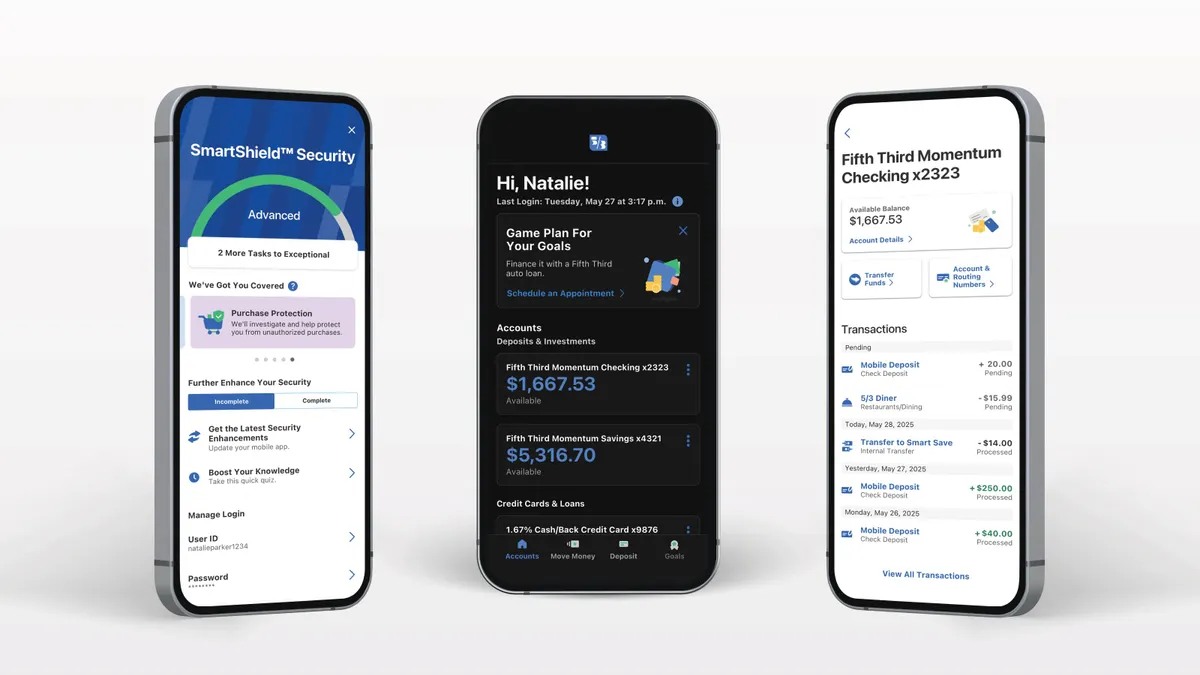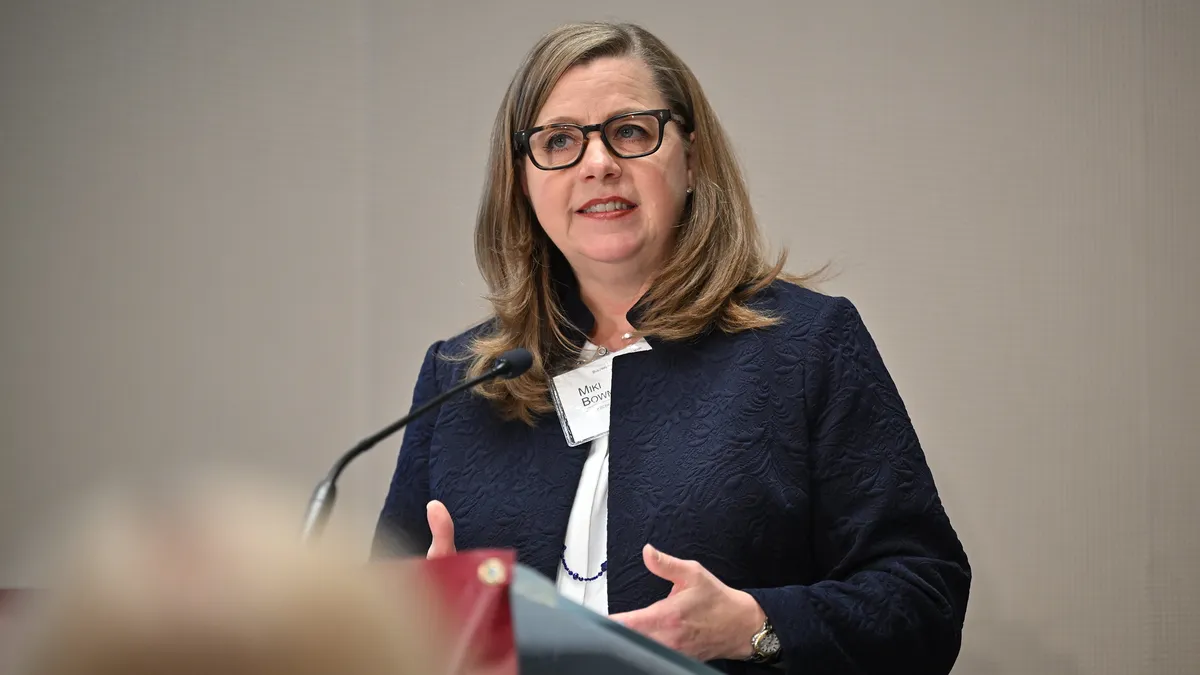Dive Brief:
- The Federal Deposit Insurance Corp. is giving banks an extra year to comply with a rule forcing them to keep better track of insured deposits. The agency voted 3-1 Tuesday to extend to April 1, 2021, the time by which banks with at least 2 million deposit accounts must comply with heightened IT standards as long as the banks give the FDIC notice. The rule aims to help the FDIC pay out insurance claims in case a bank fails.
- The agency unanimously approved a final rule giving banks additional ways to verify the signature of each joint account holder, such as through debit card transactions. Signatures are already required to be “wet” — meaning, not electronic. The change would help a bank more quickly verify that each person can qualify for up to $250,000 in deposit insurance.
- A new FDIC proposal may relieve banks of some of the public disclosure requirements they’re required to submit to gain safe harbor when sponsoring certain securitized assets. Banks have said public disclosure on private placements could put the institution at risk. The FDIC proposes focusing more on residential securitized assets and be more in line with the Securities and Exchange Commission’s disclosure requirements, which are limited to public issuances.
Dive Insight:
The sole dissenting vote on both the insured-deposit extension and public-disclosure amendment came from former FDIC Chairman Martin Gruenberg, who argued that the extension was unnecessary, and that the securitized-asset proposal doesn’t clarify why requirements need to be eased — specifically in relation to residential mortgage-backed securities, a “central cause of the financial crisis,” Gruenberg said during the meeting.
Current FDIC Chairman Jelena McWilliams replied, “With respect to any concerns that this could lead to a repeat of practices that contributed to the financial crisis, regulatory requirements are dramatically different today.”
The proposal, which will have a 60-day comment period once it’s posted in the Federal Register, may help boost residential lending and reduce the compliance burden by $9.7 million, the FDIC said.












